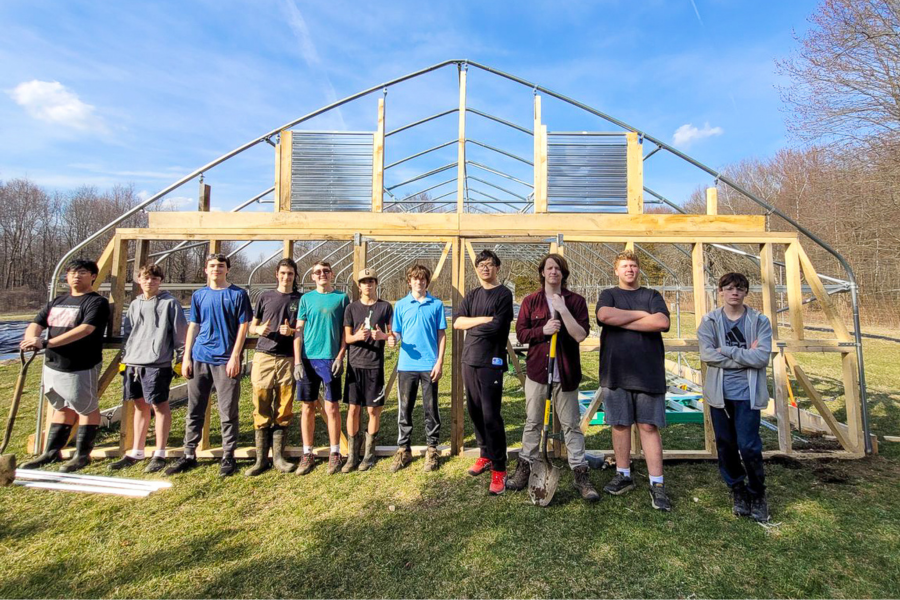
It was 2011 when the farming program at Trinity-Pawling first began, as Josh Frost ’04, Ashley Frost, Maria Reade, and several zealous students revived the biology greenhouse, started seeding vegetable plants, and eventually built raised beds on the edge of campus. Now 12 years later, the farm is a full-fledged agricultural operation on campus. Led by the Frosts, the program focuses on the concepts of sustainability and environmental stewardship through campus-based food production, beekeeping, composting, recycling, and renewable energy.
We caught up with Josh Frost ’04 this week to learn more about the busy spring season and the latest projects in bloom on the farm!
Tell us a bit about the new greenhouse and how it’s coming along.
The new greenhouse measures 24’ x 48’, which is slightly larger than the greenhouse we erected in 2011. The goal is to use this greenhouse specifically for season extension. As such, it sits on skids and can be moved over various plots throughout the growing season. We will plant tomatoes and other summer crops in it over the next few weeks, and we will look to pull it over crops like spinach and lettuce next fall. This should allow our students to continue to harvest these crops well into November, or even December. The team is putting the finishing touches on the end walls — which we milled from storm-damaged trees on campus — and will be installing the plastic shortly.
How are the Trinity-Pawling honey bees doing?
We are entering our second season with honey bees, located near the farm. Both of our colonies from last year survived the winter and are off to a great start rebuilding their numbers to prepare for the summer. The boys just checked them out during our recent Environmental Stewardship Institute programming on Earth Day, and saw lots of baby bees on the way! We will be adding another colony in several weeks, so we should have a lot of honey this fall.
How has the addition of beekeeping enhanced the farming program?
Bees, and the colonies in which they live, are simply amazing. It is quite an experience for students to put on a bee suit and open up a beehive, as they not only get to see firsthand the organization of the hive, but they also get to gently handle insects from which they normally flee, giving them the opportunity to overcome their fears. As the bees are our only livestock at the moment, they also provide the boys with a unique opportunity to learn about and care for living beings beyond themselves. There is, of course, the additional benefit the bees bring to the farm and the campus as pollinators, and we have many conversations with the boys about the role honey bees and other pollinators play in ours and ecosystems across the world.
What produce will the team be growing this season?
This season we will be growing our normal fare of vegetables: potatoes, tomatoes, cucumbers, greens, peppers, garlic, onions, and more. We have also added blueberry bushes, raspberries, and we are hopeful that our new apple tree grafts will take, thus adding to the small orchard that we established in the garden last year. That orchard includes apples, pears, peaches, and plums.
What projects does the team hope to accomplish before summer vacation begins?
Our main goals are to finish the new greenhouse and ensure that all of our crops are seeded, transplanted, and cultivated. If there is time amidst those projects and our upcoming field trips to area farms, we would also love to relocate our original greenhouse up to the farm to use as a plant propagation house.
Any closing thoughts?
There are so many valuable lessons that our students learn up at the farm about nature, agriculture, and our relationships with both the Earth and each other. My hope is that students gain a greater appreciation for the complexity, beauty, and interconnectedness of the natural world in which we all live. Along with that appreciation, we strive to instill a sense of responsibility in our students to take care of the Earth and each other.
by Emma Quigley
